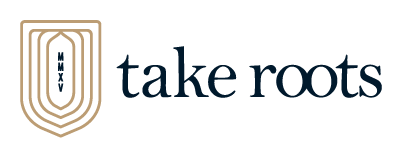In our last post, we talked about the basics of creating a communications strategy to help your organization achieve its business goals. Today, we’ll go over how to implement your strategy in the digital realm! These days, every organization needs at least a basic strategy for managing their digital presence. With all the digital tools and social media channels available today, this can quickly get overwhelming. That’s where we come in! Read on to learn how to use the right digital tools to your organization’s advantage.
Remember the goals, key messages and audiences you defined from our last post? You’re going to need them again here. Let’s get to it!
Do a digital audit.
It’s hard to make positive changes if you don’t know where you stand. This is why it’s important to perform an audit of your organization’s website and social media presence so you understand the strengths, weaknesses and gaps in your digital presence. Here are some things to look for:
- Website visitor demographics
- Website visitor numbers by page
- Ranking keywords
- Brand consistency
- Social media engagement rates
- Social media follower demographics
To do this, you can either hire a web consultancy or DIY it with Google Analytics and social media metrics tools. Once you have all this information, an easy way to interpret it is to create a simple SWOT analysis that lists your organization’s strengths, weaknesses, opportunities and threats in the digital realm.
This is the time to get critical – what are some of the things you’re doing well and what could be improved upon? It’s also a good time to get a second opinion from people inside and outside your organization. A few pairs of fresh eyes can catch things that you wouldn’t necessarily notice yourself.
Consider your audiences and their needs.
Your audiences are what determine the digital channels you use. You almost certainly need a website but you don’t need to be on every social media platform available. Each platform has its own strengths, weaknesses and user demographics. For example, if your target demographic is seniors, you would be wasting your time on Snapchat, where the typical user is aged 13-29. Your efforts would likely be better spent on Facebook, where 41 per cent of users are aged 65 and older.
 Use your key messages.
Use your key messages.
Let’s talk content. How do you know what to post? This is where your key messages come in. Everything your organization says about itself and the value you provide should reflect your key messages and ultimately, help your organization achieve its goals.
How long and in-depth your content is depends on the channel you use. For example, your website will likely have the most in-depth information, since you want your audiences to find everything they need in one place. However, a Twitter or Facebook post will have short, digestible snippets of information to make your audiences want to know more about you. Here’s a handy guide on how long social media posts should be, depending on the platform.
Stay organized with a content calendar.
So you’ve done your digital audit, defined your audiences and written out key messages. Now, it’s time to put it all together and make magic happen. To keep your momentum going, it’s important to stay organized with a content calendar.
Content calendars can help you map out which messages you’re sending out from which platforms at what time. They give you a bird’s eye view of your content and help you ensure you’re getting out the right messages on each platform to your full advantage. For example, every other Monday post a new blog or how about a wrap post at the end of each week.
Social media management tools.
The number of social media management tools out there can leave both the beginner and even the more advanced user overwhelmed. Free and low-cost options like Hootsuite are great options for organizations on shoestring budgets. The platform has been around since 2008 enabling users with – content curation, organization, scheduling, RSS integration.
Regardless of which platform you decide to go with, there are three major features that a good social media management tool should always have – publishing and RSS integration, social engagement and great analytics reporting.
Evaluate, evaluate, evaluate.
It’s so important to know if all your hard work is paying off! At least once per quarter, take a look into your analytics platforms and see what’s working, what’s not working and what needs to be tweaked. Engagement isn’t what you’d like it to be? Take a look at what time you’re posting on each platform. Maybe it’s time to tweak your messaging, or try something completely new. Keep trying until you find what works for your organization!
Need help starting or maintaining your digital strategy? Let’s talk!
